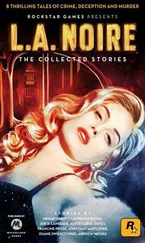And thus it is in July 1894 that Marie takes, on the sly, lessons of a new kind with Bronia: How does one make a roast chicken? Fries? How does one feed a husband?
We know, on the other hand, that a cousin has the good idea of sending a check as a wedding present. That the check is exchanged for two bicycles. And that the “little queen,” the entirely new invention that became the darling of the French, will be the honeymoon vehicle of M. and Mme Pierre Curie.
The bicycle, is freedom.
Research
To extract uranium from pitchblende, there are at that time factories. To extract radium from it, there is a woman in a hangar.
She is sure of her method. But her means are derisory.
Working with Radium
Marie gives birth to a daughter, yet does not take time off from work. Why are they so tired, the Curies, when they arrive, with Irene who is cutting her seventh tooth, at Auroux where they have rented a house for the summer?
They struggle to swim in the river and they struggle on their bicycles. And Marie has the tips of her fingers chapped, painful. She does not know, nor Pierre either, that they are beginning to suffer from the irradiation of the radioactive substances they are manipulating.
It is in the following December, on a page of the black notebook not precisely dated and bearing Pierre’s writing, that appears for the first time the word radium.
What remains is to prove the existence of the new element. “I would like it to have a beautiful color,” says Pierre.
Pure salts of radium are colorless, quite simply. But their own radiations color with a blue-mauve tint the glass tubes that contain them. In sufficient quantity, their radiations provoke a visible glow in the darkness.
When that glow begins to irradiate in the darkness of the laboratory, Pierre is happy.
Children
Marie makes jams and the clothes of her daughters out of a spirit of thrift. Not from zeal.
Relationship
When it comes to mathematics, he judges her stronger than he and says it good and loud. She, for her part, admires in her companion “the sureness and the rigor of his reasonings, the surprising suppleness with which he can change the object of his research …”
Each of them has a very high idea of the value of the other.
Fellow Workers
An aura has been created that attracts and impresses at the same time. The echo of their works, the radiance of Pierre, the intensity of Marie, that force which is all the more moving because the young blond woman appears more and more slender under her black smock, the couple they form, the almost religious spirit of their scientific engagement, their asceticism, all this has attracted young researchers in their wake.
A disheveled chemist, André Debierne, will enter the life of the Curies never to leave it again.
Marie Curie is neither a saint nor a martyr. She is young at a time when most women oscillate between remorse and hysteria, either guilty or “out of their bodies.”
Genius: Radioactivity
In fact, two German researchers announce that radioactive substances have physiological effects. Pierre immediately exposes his arm deliberately to a source of radium. With happiness, he sees a lesion form.
To be recognized by their peers — the Curies certainly appreciate that satisfaction. Besides, it is “fair.”
Now, it happens that at night she gets up and starts to wander through the sleeping house. Little crises of somnambulism that alarm Pierre. Or it is he who is ravaged by pains that alter his sleep. Marie watches over him, worried, powerless.
And her appearance? Marie is sitting next to Lord Kelvin, in her “formal dress.” She has only one, still the same after ten years, black, with a discreet neckline. In truth, it is better that she has no love of toilette, because she has no taste at all and never will have. Black — which distinguishes her, because it is not customary to wear it — and gray to which she has subscribed out of convenience, settle matters well and make a good setting for her ash-blond hair.
Fame
There exists a threshold beyond which disdain for honors borders on affectation, and one would be tempted to think that Marie Curie has crossed it when she complains, in sum, at having received, with Pierre, the Nobel Prize.
Wrested from their bowl, our two goldfish suffocate and thrash about. No, they wish no banquet; no, they wish no tour of America; no, they do not wish to visit the Automobile Show.
However, they are both unconditional admirers of Wagner.
The Death of Pierre
He takes the train back from the country Monday evening, carrying a bouquet of ranunculus.
Marie returns Wednesday evening. The rain has resumed in Paris.
The next day, Thursday, Pierre is on his way from his publisher, Gauthier-Villars, to the Institute. The rain has started again. He opens his umbrella. The rue Dauphine is narrow, congested, he crosses behind a fiacre …
As always, he is absentminded … Approaching the fiacre in the opposite direction, the driver of a wagon with two horses, coming from the quays and going up the rue Dauphine, sees appear before his left horse a man in black, an umbrella … The man totters, he tries to seize the horse’s harness … Hampered by his umbrella, he has slipped between the two horses which their driver has attempted with all his strength to hold back. But the weight of the heavy wagon, five meters long and loaded with military equipment, drags him forward. It is the back left wheel that crushes Pierre’s skull. And now that famous brain, that beloved brain, seeps out on the wet cobblestones …
At the Police Station
The body is removed to a police station. An officer picks up his telephone. But Pierre Curie no longer has ears to be annoyed that he belongs, in death as in life, to the number of those for whom one disturbs the minister of the interior.
Marie
Marie remains frozen; then she says: “Pierre is dead? Completely dead?”
Yes, Pierre was completely dead.
Reaction
Telegrams flow in, from all corners of the world, letters pile up, the condolences are royal, republican, scientific, formal, or simply emotional and sincere. Fame and love have been brutally mown down by death …
A new title, a sinister one, is added to those with which Marie has up to then been dubbed. Henceforth she will be called only “the illustrious widow.”
Eleven years — that is long. Long enough so that the roots of love, if the tree is robust, plunge so deep that they will subsist always, even dried up.
Letters to Pierre
She begins to write to Pierre, a sort of laboratory notebook of grief.
“My Pierre, I arise after having slept fairly well, relatively calm. There is scarcely a quarter of an hour of that and here I again want to howl like a wild beast.”
Summer is here and the sun, so wounding when in oneself everything is black …
“I spend all my days in the laboratory. I can no longer conceive of anything that can give me personal joy, except perhaps scientific work — but no, because if I were successful, I could not tolerate that you should not know it.”
She will be successful. And she will tolerate. Because that is the law of life.
Teaching at the Sorbonne
As she gives her first lecture, continuing where Pierre left off, something is happening that clouds the eyes, tightens the throats, holds the audience from top to bottom of the tiers of seats frozen with emotion before that little black silhouette.
It was fifteen years ago, to the day, that, arriving from Warsaw, a little Polish student crossed for the first time the courtyard of the Sorbonne. The second life of Marie Curie has begun.
Читать дальше












